Mycoplasma Chronic Respiratory Disease
Mycoplasma Complicated Chronic Respiratory Disease (CCRD) -A Review
Published: October 6, 2009
By: Gupta A., PhD Scholar, Division of Medicine, IVRI- Izatnagar, INDIA. Ezzeldin, T., District Sales Manager- Dammam- Saudi Arabia. Agrawal, P., Marketing Manager, Montajat Pharm.- Saudi Arabia.
Introduction
Poultry industry is one of the fastest growing segments of the animal industry. The worldwide consumption of poultry is increasing. Today's bird has the potential to grow rapidly because of intensive genetic selection so they are more susceptible to stressors of the respiratory and circulatory systems.
The poultry industry faces the maximum economic losses by increase in mortality resulting from ascites, heart attack, heat stress and respiratory complications. Therefore, the respiratory system must function properly and can not be compromised if maximum performance is to be realised.
Managing respiratory disease is important to get the most out of the bird's genetic potential. Respiratory disease in poultry is the result of complex interaction of several stressor factors such as presence of viral and Mycoplasma challenge, bird handling and transport, weather changes or environmental fluctuations, diet changes, facility or management inadequacies and routine vaccination can all upset the normal physiology and homeostasis of birds. Of all the stressor factors, pathogen interactions play the most significant role in development of respiratory disease complex and the Mycoplasma infection are responsible for major losses.
Epidemiology and Etiology
Mycoplasma gallisepticum is the most economically significant Mycoplasma pathogen of domestic avian species, and has a world-wide distribution. All species of birds of all ages are susceptible to chronic Mycoplasma infection. Mycoplasmas are very highly evolved bacteria that, over time, have lost many of their non-essential genes. Because of fewer genes than any other known free-living organism, so they are totally dependent on their host for nutrition and survival. Mycoplasmas are relatively short-lived outside the host as they do not have a protective cell wall. They are assumed to be susceptible to the commonly used disinfectants therefore good hygiene is a first line defence on a commercial poultry unit (1).
A number of different agents are involved in the aetiology of this disease. These include M. synoviae or M. gallisepticum in chickens, M. meleagridis and M. iowae in turkeys. M. synoviae is usually less pathogenic.
When Mycoplasma infection interacts with common respiratory field viruses or vaccines, immunosuppressive agents and poor management practices, it leads to chronic respiratory disease (CRD). With secondary Escherichia coli infection further complicating the interaction, it becomes a complicated chronic respiratory disease (CCRD) and the resulting losses can be catastrophic (2, 3 & 4).
Mode of transmission
It is usually transmitted through eggs, feed, water, droplet infection, and by care takers (5). E. coli is a secondary invader of Mycoplasma-infected birds. Aerosol spread occurs. Severe ND, IBV or ILT reactions may occur after vaccination, especially if given by spray to chicks previously infected with Mycoplasma or E. coli.
Predisposing factors
Environmental stress factors such as increased or decreased temperature, high concentration of ammonia, dust in the air, and other factors associated with poor ventilation, may act as predisposing factors.
Clinical signs (Fig 1&2)
The disease is characterized by loss of appetite, dullness, depression, tendency to huddle together, coughing, tail bobbing when breathing, emaciation, respiratory rales, sneezing, open mouth breathing, conjunctivitis, periorbital swelling, poor growth, decreased feed consumption and increase in mortality (6 & 7).

Fig. 1 Poultry showing dullness and depression (8)
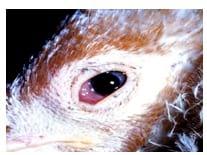
Fig. 2 Poultry showing conjunctivitis, periorbital swelling and eyelid edema (8)
Postmortem lesions (Fig 3-12)
- Airsacculitis
- Fibrinous pericarditis and perihepatitis
- Salpingitis
- Panopthalmitis
- Presence of caseous exudates in the air sac
- Severe tracheitis with variable exudate - catarrhal to purulent
- Pulmonary granuloma (6, 9 & 10)
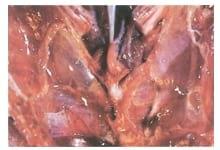
Fig. 3 Cloudy appearance of the abdominal airsacs (11)
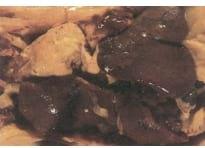
Fig. 4 Pericarditis and perihepatitis (11)
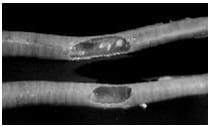
Fig. 5 Severe tracheitis. Both tracheas are congested and the upper sample has mucopurulent material in the lumen (12)
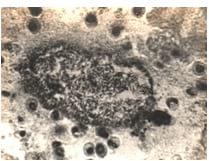
Fig. 6 Air sac showing coccobacilliform bodies surrounded by mononuclear cells (13)

Fig. 7 Air sac showing presence of fibrinous and serofibrinous exudates (13)
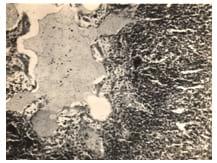
Fig. 8 Lung showing accumulation of serous exudates in tertiary bronchioles and atria. Increased cellularity of air capillaries (14)

Fig. 9 Giant cell granuloma in air capillaries (14)

Fig. 10 Accumulation of haemorrhagic exudates in tertiary bronchioles and atria (14)

Fig.11 Larynx showing lymphofollicular reaction in submucosa (14)
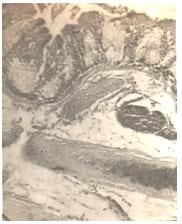
Fig. 12 Trachea showing hypertrophy, hydropic degeneration and tuboalveolar elongation of intraepithelial glands (14)
Diagnosis:
- Laboratory isolation and identification of E. coli or Mycoplasma from lesions (Fig 13-16).
- Detection of Mycoplasma colonies using fluorescent antibody test, recombinant probe and hybridisation or antigen capture ELISA.
Biochemical studies (15)
- Tetrazolium methylene blue reduction test
- Carbohydrate fermantation test
- Breakdown of arginine
- Formation of film on egg yolk agar
Serological test (16 & 17)
- Growth inhibition test
- ELISA
- Plate agglutination
- Haemagglutination-inhibition, (HI)
- Testing of sera for antibodies against Mycoplasma.
Molecular techniques (18)
- Polymerase chain reaction
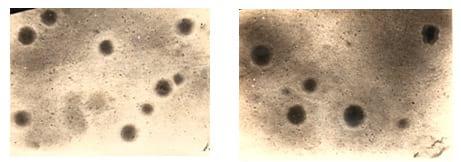
Fig. 13 & 14 Mycoplasmal colonies on Edward's PPLO agar (19)

Fig. 15 & 16 Mycoplasmal colonies with Diene's stain on Edward's PPLO agar (19)
Treatment:
Therapy of CCRD is complex, and there is really no sure shot treatment to completely eliminate Mycoplasma- infected birds, except elimination of the flock.
Fluoroquinolones (Enrofloxacin, Danofloxacin, Norfloxacin, Flumequin etc.) are on withdrawal phase world- wide, owing to their deleterious effects to public health through cross resistance to human strains of Campylobacter and other bacteria.
Various antibiotics like Tylosin, Tiamulin, Tilmicosin, Aivlosin, Tetracyclines (mainly Doxycycline, Chlortetracycline, Oxytetracycline), Spiramycin, Erythromycin, Gentamicin and Ketasamycin, Neomycin, Colistin, etc. are being used alone or in various combinations to cure and control the disease, with variable success, owing to mixed response to resistance development in the various microbes. Montajat has been monitoring and focussing on the resistance menace of the existing antibiotics, and has been substantially investing on the market research, clinical studies and R&D. It has been helping the local farms through onsite consultancy, and marketing numerous products to combat this menace. Some of the known brands are- Rythrocol, Florjat, Micojat, Spectolin, Montcol, Doxyjat, Rythrojat, Enrojat, Kimox and Tiamojat. For more details, please visit us in the Montajat showcase of Engormix, or our website www.montajat.biz
Prevention and Control:
The basic control measures suggested are-
- Proper biosecurity program and schedule, for each cycle
- Hatch stock, free of Mycoplasma infection.
- Use pelleted feed to kill E. coli.
- All-in- all-out production, and routine serological monitoring.
- Vaccinate breeders against E. coli, MG, MS, NDV, IBV, ILT and Infectious Bursal Disease (IBD) to prevent the disease.
- Vaccinate progeny against ND, IB, ILT and IBD, hatch and place Mycoplasma infected stock separate from Mycoplasma negative stock to reduce the spread of the organism.
- Treat all Mycoplasma positive flocks with antibiotics to reduce spread into eggs.
Elimination of infected flocks, and strict quarantine and biosecurity measures until eliminated completely.
A preventive program against CCRD has been developed and tested successfully by Montajat, which alleviates any passive infection. In this program, following regimen is followed during the broiler life- cycle:
- Day 1, 2 ,3 - MICOJAT- L oral liquid (Tilmicosin 25%) @ 1ml/ 3 liters of drinking water, along with COLIJAT WSP (Colistin sulphate 10MIU/gm) @ 1gm/ 10 liters of drinking water. It cleans the chicks from Mycoplasma sp., E. coli and Salmonella brought in the flock vertically or horizontally, or vaccine reaction flare.
- Day 13, 14 and 15 (or equivalent for 3 days, after one day of Gumboro vaccination). Administer FLORJAT- 30 (Florfenicol 30% oral solution) @ 30mg per kg body weight (grossly 1 liter/ 10MT of live bodyweight), to clear all E. coli and Salmonella sp.
- Day 21, 22, 23 (or equivalent for 3 days, after one day of La Sota vaccination)- Administer COLIJAT WSP with RYTHROJAT WSP @1kg/ 6MT live body weight, and BROMODIL @ 1ml/ liter of drinking water. This controls infection at the most susceptible time of infection. Bromodil enhances ventilation and better penetration of the drugs in the pulmonary tissues.
- Day 25, 26 and 27- Administer ANTOX liquid continuously for 3 days in drinking water @ 1ml per liter of drinking water. This prevents adhesion of Salmonella by CEM (Competitive exclusion method) and alleviates mycotoxins activity, besides acting as a natural growth promoter.
The prevention program reduces the cost of treatment, decreases FCR (clean and healthy villi), controls vertical and horizontal transmission, and enhances the profitability of the flock. Also, it adheres to meet the withdrawal time norms.
References:
- 1. Janet M Bradbury (2003) Detection and epidemiology of Mycoplasma infections and some recent observations. Presentation given at the WPSA Asia Pacific poultry conference held in Bangkok.
- 2. Bankowski, R.A. (1961) Respiratory disease complex of chicken in the United States. Br. Vet. J. 117:306-315.
- 3. Brion, A. (1961) Etiology and control of chronic respiratory disease. Br. Vet. J. 117:296-305.
- 4. Gross, W.B. (1956) Escherichia coli as a complicating factor in chronic respiratory disease of chickens and infectious sinusitis of turkey. Poult. Sci. 35:765-771.
- 5. Van Roekel, H. (1955) Respiratory disease of poultry, Advances in Veterinary Science. 1956 Edin. Acedemic press, New York. Vol.II. pp36.
- 6. Tablante, N.L., Brunet, P.Y., Odor, E.M., Salem, M., Harter Dennis, J.M., and Hueston, W.D. (1999) Risk factors associated with early respiratory disease complex in broiler chickens. Avian Diseases. 43:424-428.
- 7. Sharma, S.K. (1977) Pathogenicity trials of the Mycoplasma strain isolated from turkey/poultry and certain antibiotic trial against chronic respiratory disease. M.V.Sc. thesis submitted to the C.V.Sc., HAU, Hisar, India.
- 8. Korich et al (2005) Online: Manual of Avian Diseases, Cornell University, College of Veterinary Medicine, USA. Online access
- 9. Gross, W.B. (1958) Symposium on chronic respiratory disease of poultry. II. The role of E. coli in cause of chronic respiratory disease and certain other respiratory disease. Amer. J. Vety. Res. 19:448-452.
- 10. Kohler, H. (1960) Histopathologic patterns of the respiratory tract in chronic respiratory disease and in infectious bronchitis of fowl. Dt. Tierariztl. Wschr. 67:665-670.
- 11. Herenda, D., Chambers, P.G., Ettriqui, A., Seneviratna, P. and Da Silva T.J.P. (2000) Manual on meat inspection for developing countries.Specific diseases of poultry. Chapter 7.
- 12. Paul Mc Mullin (1994) Respiratory Disease Complex. A Pocket Guide to Poultry Health and Disease.
- 13. Chakrabarti, R.L. (1966) Histopathology of respiratory diseases of poultry. M.V.Sc. thesis submitted to the Agra University, Agra, India.
- 14. Kumar, A. (1972) Studies on pathology of avian respiratory diseases with special reference to natural and experimental Mycoplasma infections. M.V.Sc. thesis submitted to the Orissa University of Agriculture and Technology, Bhubaneswar, Orissa, India.
- 15. Barber, T.L. and fabricant, J. (1971) Identification of Mycoplasma procedure for bio characterization and purification. Appl. Microbio. 21:594-599.
- 16. Edward, D.G. and Fitzjerald, W.A. (1954) Inhibition of growth of pleuropneumonia like organisms by antibody. J. Patho. Bacteriol. 68:23-30.
- 17. Jungherr, E.L., Luginbuhl, R.E. and Jacobs, H.E. (1953) Pathology and serology of air sac infection. "Proceeding Book." J. Amer. Vety. Med. Assoc. 90th Ann Meeting. 303-311.
- 18. Levisohn, S. and Kleven, S.H. (2000) Avian mycoplasmosis (Mycoplasma gallisepticum). Rev Sci Tech. 19:425-42.
- 19. Padhi, L.N.P. (1971) Studies on the chronic respiratory diseases of poultry with special reference to isolation of causative agent, in vitro antibiotic sensitivity of Mycoplasma gallisepticum, egg-yolk agglutination method of diagnosis and control by air-sac injection of Rovamycin. M.V.Sc. thesis submitted to the Orissa University of Agriculture and Technology, Bhubaneswar, Orissa, India.
Suggested further reading:
- Herenda, DC and Franco DA, Poultry Disease and Meat Hygiene: A Color Atlas, Iowa State Univ. Press, USA- Online access (Google Books)
- Korich et al (2005) Online: Manual of Avian Diseases, Cornell University, College of Veterinary Medicine, USA. Online access
- Saif, Y. M., Diseases of Poultry, Blackwell- USA, 2003, 11th Edi. Pg 719- 773; can be viewed limitedly online at- Online access (Google Books)
Related topics:
Authors:
Montajat Veterinary Pharmaceuticals Co. Ltd.
Recommend
Comment
Share

Would you like to discuss another topic? Create a new post to engage with experts in the community.
















